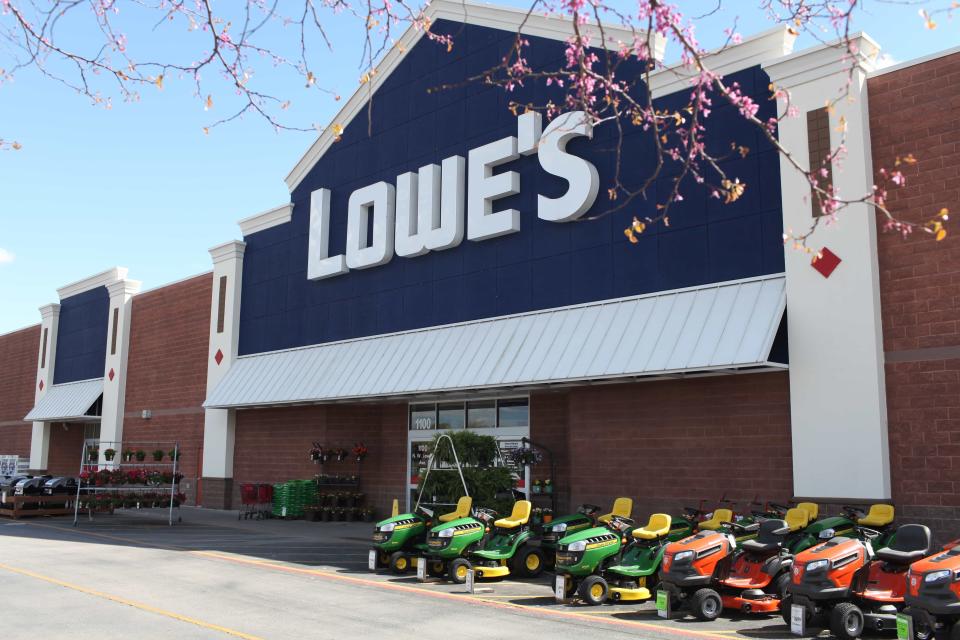Lowe's Is Still a Fixer-Upper
Lowe's (NYSE: LOW) always seems to be playing second fiddle to its primary rival in the home improvement retail sector, Home Depot (NYSE: HD). Indeed, over the trailing one and three year periods, Lowe's stock appreciation has lagged behind not only its larger competitor but also the S&P 500 index. And the company's first-quarter results, which sent the stock price spiraling down more than 10%, certainly didn't help.
In Q1, total sales rose to $17.7 billion, a 2.2% increase year over year, and adjusted earnings per share (EPS) grew to $1.22, a similarly tepid 2.5% increase year-over-year. The good news is that comparable store sales rose 3.5%.
While that's not nearly as strong as investors would like to see, in a quarter marred by bad weather and commodity price fluctuations, it was actually a full percentage point better than what Home Depot experienced in the first three months of the year. Let's take a closer look at the quarter to see what spooked investors and caused shares to fall.

Lowe's blames the drop in its gross margin on outdated software and personnel turnover in the first quarter. Image source: Lowe's.
Bad news first
The bad news is that while sales increased, so did Lowe's cost of goods, sending the company's gross margin down from over 33% to 31.5%. (Home Depot's gross margin, by contrast, held steady in the quarter.) To hear CEO Marvin Ellison describe it, this drop in gross margin was primarily caused by two things: legacy software that does not provide good visibility to the company's pricing ecosystem and large personnel turnover among the company's executive ranks.
The legacy software was apparently incapable of recognizing price increases from vendors and notifying Lowe's management to raise prices correspondingly, so the price increases could be passed on to consumers. With this outdated software, Ellison said that executives had to view "multiple systems and numerous reports" to fully understand pricing changes and the impact they would have on the home improvement retailer's gross margin.
What's more, Ellison has replaced 11 of 13 merchandising vice presidents in the past six months. While Ellison maintained the turnover was necessary to put the right talent in place for the future, the change only served to further limit visibility in the present. In the company's conference call, Ellison said:
As we transition from legacy merchants to new merchants, there was much more disruption in Q1 than we anticipated, and this disruption was primarily driven by a lack of visibility in our pricing ecosystem. ... Based on the ... really limited system visibility, we could not quickly analyze and offset these cost increases with appropriate pricing action. Our challenges with pricing tools and processes aren't new to Lowe's. However, we did not anticipate the impact of fully communicated cost increases, significant organizational changes with 11 new merchandising VPs and legacy ineffective pricing tools and processes.
A work in progress
So what is Lowe's doing to correct these problems? Ellison says the company is changing its pricing and point-of-sale systems, which will "streamline who can affect costs and pricing changes in sequence those pricing actions to prioritize those that have the greatest impact to gross margin." The goal is to create a more efficient process to systematically prioritize pricing changes to offset cost pressures.
Ellison also pointed to Lowe's recent acquisition of the Retail Analytics platform from Boomerang Commerce, which will be integrated into Lowe's pricing management system, increasing its intelligence and agility. Lowe's CIO Seemantini Godbole said the acquisition will help the company leverage data quickly and effectively.
Finally, Ellison said that he accepts that changing so many of the merchandising VPs was disruptive and may have hurt the quarter's results, but steadfastly believes it was in the company's best long-term interests. Some of the replacements, Ellison added, have 30 to 40 years of experience in their category and are already identifying additional issues the company needs to resolve.
A new low for Lowe's?
Lowe's is fortunate it does not operate in a retail sector more susceptible to online disruption. Many of the issues it is working to resolve are simply table stakes for running a successful retail operation in 2019. For years, it has been obvious Lowe's is not keeping up with Home Depot in its technological efforts, including its online sales efforts, digital channel marketing, and outreach to "Pro" customers, which includes general contractors, handymen, and maintenance staff. That Lowe's cannot even use its system to appropriately control pricing shows how far behind it is on this front.
The good news for Lowe's is that it is not too late to get back in the game. The home improvement retail sector is dominated by the two giants and somewhat insulated from e-commerce competitors, due to the difficulty in shipping heavy materials such as drywall and lumber. Despite all its struggles, the company is still showing positive sales growth and remains immensely profitable. For investors willing to take a long-term view, the company might yet prove to be a good value at a forward P/E ratio of about 17.4. While it could prove to be a bumpy ride, Ellison does seem to have a turnaround plan to get the company to where it needs to be.
The problem with investing in Lowe's remains that Home Depot's shares are available at a forward P/E ratio of about 20, just a slight premium to Lowe's stock price. Until Lowe's turnaround is showing more fruits of success or it's available at a steeper discount, I believe Home Depot is still the superior investment.
More From The Motley Fool
Matthew Cochrane owns shares of Home Depot. The Motley Fool recommends Home Depot and Lowe's. The Motley Fool has a disclosure policy.

 Yahoo Finance
Yahoo Finance 